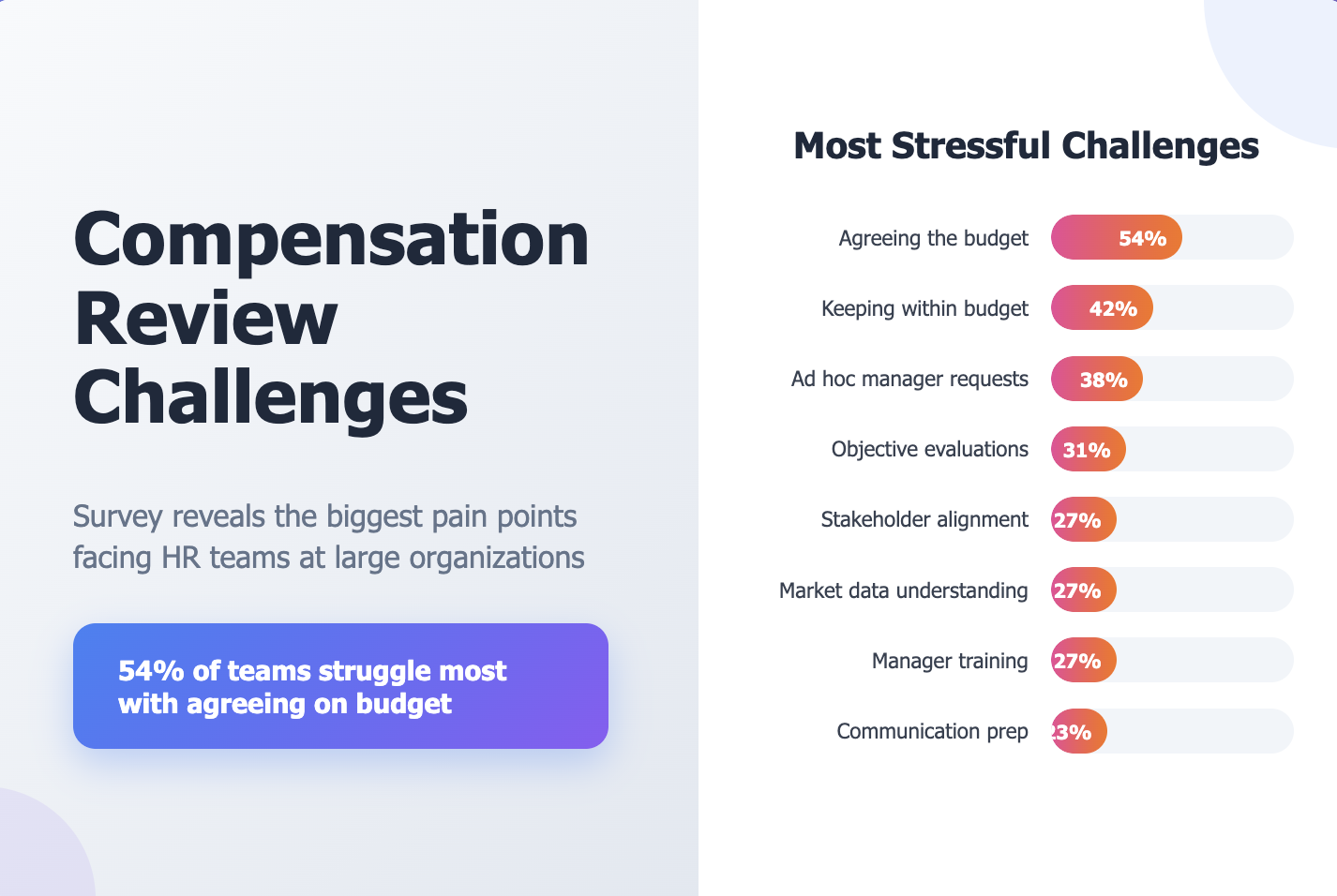How to Measure the Effectiveness of your Compensation Strategy

Navigating employee compensation is no small feat.
It's an ongoing journey filled with twists and turns, often leaving even the most experienced HR professionals and business leaders feeling lost in a labyrinth of market rates, budget constraints, and regulatory compliance.
But the most frustrating part? It can be hard to tell if all your hard work is paying off…
To help you measure your compensation strategy’s effectiveness, we spoke with industry expert AJ Cole. Cole is a seasoned compensation strategy expert with experience at AirBnB, Meta, and Impossible Foods, and his insights provide a valuable framework for organizations looking to optimize their compensation strategies with an analytical approach.
1. Measuring Market Competitiveness
Compensation KPIs and Sources:
AJ’s Perspective:
[.quote-purple]While we often use metrics like 'compa-ratio' to define how closely aligned our actual compensation is relative to the market (or market-derived ranges), these comparisons are only as good (and as recent) as the data that went into them. I've found it's important to partner with your HR peers to regularly evaluate how effective your compensation strategy is when applied to real-world scenarios. Your TA team will have the data and be the first to notice extended time-to-hire and low offer acceptance rates, which can be early signals to refresh your underlying market data and perhaps update your ranges. On the other hand, your HRBPs can tell you that the reasons behind employee turnover are often complex. Still, if compensation is commonly cited in exit surveys, it's worth investigating because it could become a problem requiring costly corrections.[.quote-purple]
2. Measuring Internal Equity and Satisfaction
Compensation KPIs and Sources:
AJ’s Perspective:
[.quote-purple]Even if you could say your compensation program is 100% equitable, competitive, and consistent today, future ad hoc decisions made in good faith might not be so perfectly calibrated. And if you aren't regularly monitoring your pay practices, these ad hoc decisions can quickly add up to significant differences in compensation decisions and outcomes.[.quote-purple]
3. Measuring Financial Sustainability
Compensation KPIs and Sources:
AJ’s Perspective:
[.quote-grey]Revenue is useful as a filter for relevant peer groups/market data sets, but fundamentally, it's also helpful to provide context related to the expenses we incur for labor with our pay programs. For example, if we're trying to attract talent from firms with revenue substantially greater than ours, we know they have greater resources to deploy in competing compensation negotiations. We may see the effects of this in more common exceptions to our pay bands, with offers going out above the band (red-circled). Not all compensation strategies are viable for all organizations or even for all stages of an organization's development. Understanding what is sustainable is important to help determine an appropriate compensation strategy for your organization that effectively competes for talent from the sources with the skills you need.[.quote-grey]
Continuously Improving Your Compensation Strategy
The effectiveness of a compensation strategy requires constant analysis and ongoing refinement.
Adopting a holistic approach to measuring and monitoring market competitiveness, internal equity, and financial sustainability can help keep your compensation approach competitive.
Want to see how the people teams at Braze, Warby Parker, Hopper, and Thoropass measure their compensation strategies? Check out a demo of Aeqium’s compensation analysis, planning, and communication tools today.




